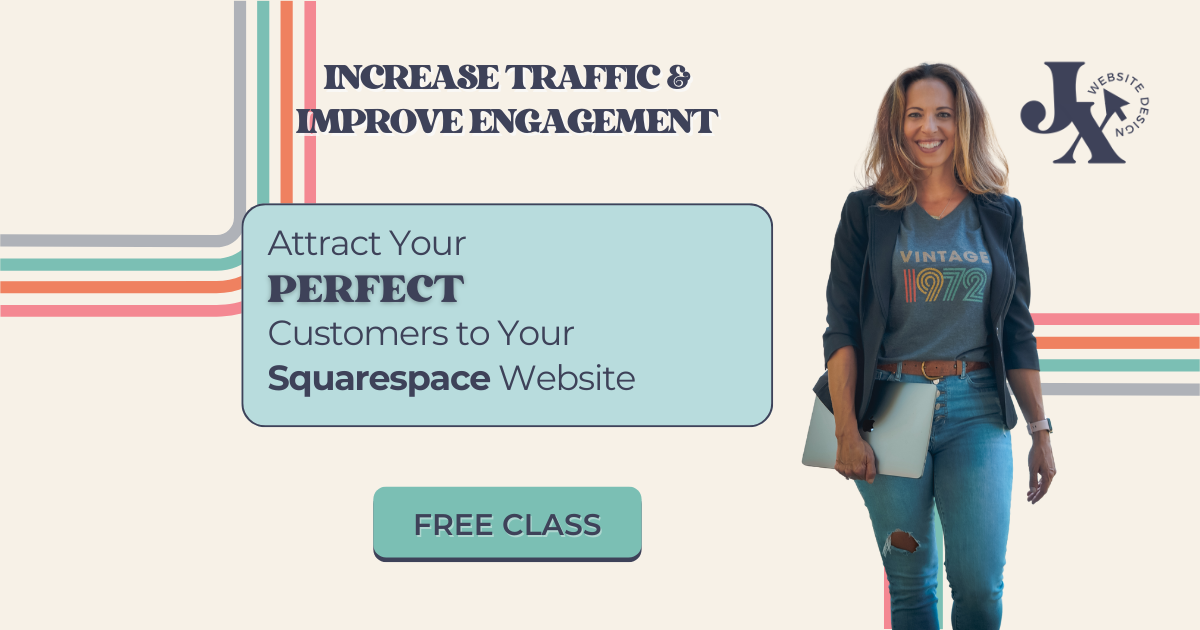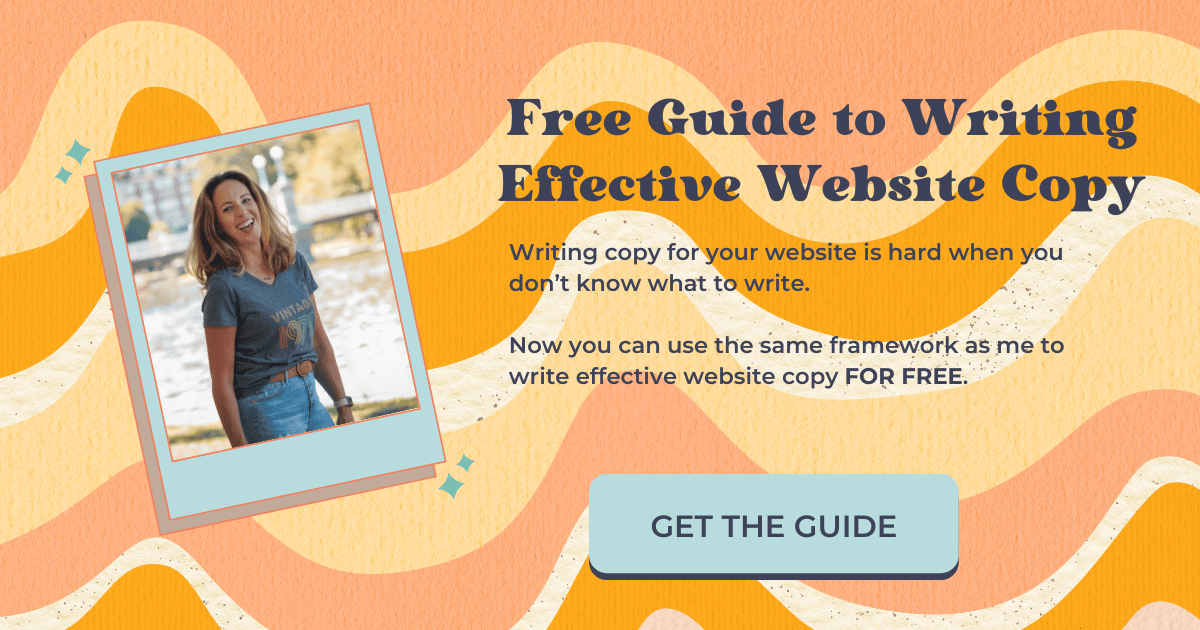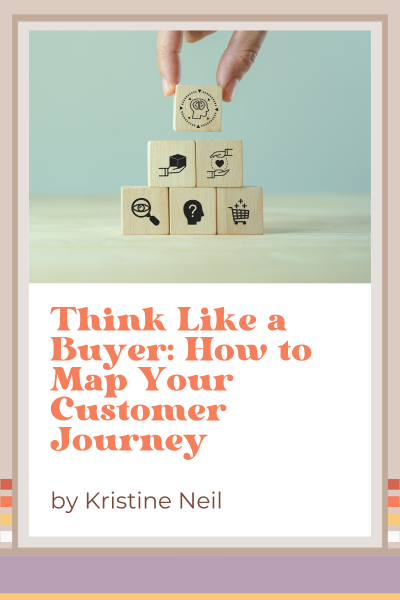Think Like a Buyer: How to Map Your Customer Journey
by: Kristine Neil
Squarespace Expert & Web Designer
https://kristineneil.com/
Most people design their website like a checklist:
✔ Design homepage
✔ Add services page
✔ Set up contact form
And technically… they’re not wrong. But if you only focus on what you offer (and ignore what your customer actually needs), your site experience can quickly break down. So instead of just building out pages because you think you should, let’s look at what really guides your buyer’s decisions so you can create with purpose.
Because your buyer isn’t following your site structure. They’re following their own journey - one that’s part emotional, part practical, and 100% driven by how well you earn their trust.
If you want more sales, whether you provide services, digital products, or a full-blown eCommerce storefront, you can’t just think like a business owner.
You have to start thinking like a buyer.
What Is a Customer Journey Map?
It's a step-by-step view of your customer's experience - from first hearing about you to deciding whether to come back. Starting with a journey map before designing can make a big difference. It ensures you understand what your customers feel, wonder, and need to move forward.
Think of it like emotional UX.
When you understand how your customer thinks and feels at each stage of the journey, you can write, design, and structure your website in a way that makes them feel supported, not sold to.
And here’s the thing: the better the experience, the less convincing you have to be. You’re no longer pushing people toward a decision - they’re already sold by the time they reach the buy button.
The 5 Stages of the Customer Journey - And What to Do at Each One
It doesn’t matter what you sell; most journeys follow the same basic path. Here’s a breakdown of what your buyer is likely experiencing and, most importantly, how your site design can help them keep moving along.
1. Awareness
Feelings: Curious, skeptical, hopeful
Needs: A clear sense of who you are and why it matters
This is the “oh hey, who’s this?” stage. Maybe they found you through a blog post. Maybe a friend sent them a link. Maybe they’ve been quietly stalking you on social for a while and finally decided to check your site out.
However they landed there, your job now is to earn attention and keep it - without overwhelming them or looking like you’re trying too hard. Your homepage (or landing page) should clearly communicate what you do, who you do it for, and why they should care. So, if what you offer is buried three scrolls deep or what sets you apart from your competitors is hidden in cutesy sales copy, you're probably losing people before they even get started.
Simple solutions:
Bold headlines
Strong branding
Visible testimonials
ℹ️ Pro tip: First impressions aren’t always made on your homepage. In fact, lots of visitors are never even going to see that homepage you obsessed over! They might land on a blog post or product page first and not click anywhere else, so make sure every single page gives off a consistent brand vibe and a clear path forward.
2. Consideration
Feelings: Interested, cautious, overwhelmed
Needs: Clarity, credibility, reassurance
Ok, now they’re poking around. They want to trust you, but they’re still trying to figure out if what you’re offering is a fit. This is where most websites fall short. They’re too vague, too generic, or too focused on what you want to say instead of what they need to hear.
This stage is also an opportunity for you to help customers self-qualify. Make your services or product info crystal clear. This is the time to be proactive and address objections head-on. Show how you solve real problems. Help people picture themselves using your thing or experiencing your service and loving it.
And yes, you need an FAQ page, or at the very least, a dedicated FAQ section. Even a short one. The goal isn’t to answer every possible question under the sun - it’s to show that this ain’t your first rodeo, and that your potential customer isn’t the only one wondering what they’re wondering.
Simple solutions:
FAQ pages or sections
Service breakdowns
Clear pricing
3. Purchase
Feelings: Excited, nervous, maybe a little lost
Needs: Ease, clarity, and a reason to commit
They’re this close to buying, but this is also where doubts creep in. Is this worth the price? Is it really going to help? Will I regret this? Can I get my money back if everything goes horribly, terribly wrong?
Even the tiniest bit of friction can derail a purchase. So clean up your checkout flow. Nix any unnecessary forms or questions. Spell out what happens next. Reassure people with guarantees or return policies if you offer them. If you’re selling a service, make it easy and allow people to book or schedule a time with you directly at checkout. (Acuity is great for this!)
This is also a great time to include microcopy: small notes like “Instant download” or “Delivered within 24 hours” that take the guesswork (and stress) out of making an online purchase.
Simple solutions:
Streamlined checkout
Clear next steps
Customized confirmation emails
4. Experience
Feelings: Hopeful, impatient, ready to judge
Needs: To feel taken care of
Think of this as the Instagram vs. Reality stage, aka where customers discover whether what they bought meets their expectations or not 😰
If you’re delivering a digital product, service, or course, your post-purchase experience should feel like a continuation of your brand, not an afterthought. That includes branded confirmation emails, a welcome note, or even a quick video walkthrough if needed. If you’re selling a physical product, this is where you want to make sure your packaging is on point.
Want to go the extra mile? Surprise & delight customers with an unexpected bonus, even if it’s something small, it can reinforce the idea that they made a great decision in choosing to work with you or buy from you. Think: a bonus checklist, a resource guide, little extras tucked into their shipping box, or even just a genuine thank-you. (Turns out mom making you handwrite those thank you notes to grandma was an excellent life skill.)
Simple solutions:
Thoughtful onboarding
Thank-you emails
Bonus resources
5. Loyalty
Feelings: Connected, satisfied (or… not)
Needs: A reason to stay engaged
Great experiences and products lay the foundation for loyalty, but there’s more to do. Even happy customers need reminders to revisit your brand.
The key here is to stay relevant without being annoying. The last thing you want to do is have people unsubscribe not because they didn’t love what you offer, but simply because you bombarded them with too much content.
So how do you find the right balance? Set up VIP email segments, early access offers, or behind-the-scenes content to make past clients feel like insiders. Explore ways to build a community around your brand. Set up a simple referral or affiliate program. And never underestimate the power of a well-timed check-in! Even a simple “how are things going with [product]?” can re-engage someone, make them feel seen & supported... and possibly open the door to a repeat purchase.
Simple solutions:
Client follow-ups
Sneak peeks
Early access invites
Referral perks
Bottom Line: Start With Empathy, Not Aesthetics
If your site isn’t converting, it’s usually not your design or pricing - it’s the customer journey. Sharpen your focus there first.
When you start thinking like a buyer and map out how they actually move through your business, you’ll start spotting the gaps, hesitations, and friction points that are holding them back. And once you fix those, you don’t just get more sales.
You’ll see better analytics, get better clients, stronger referrals, and a business that feels a whole lot more aligned.
Want to go deeper?
Dive into more Squarespace design, selling + UX strategy at kristineneil.com/blog.
This page contains affiliate links
Like this post?















